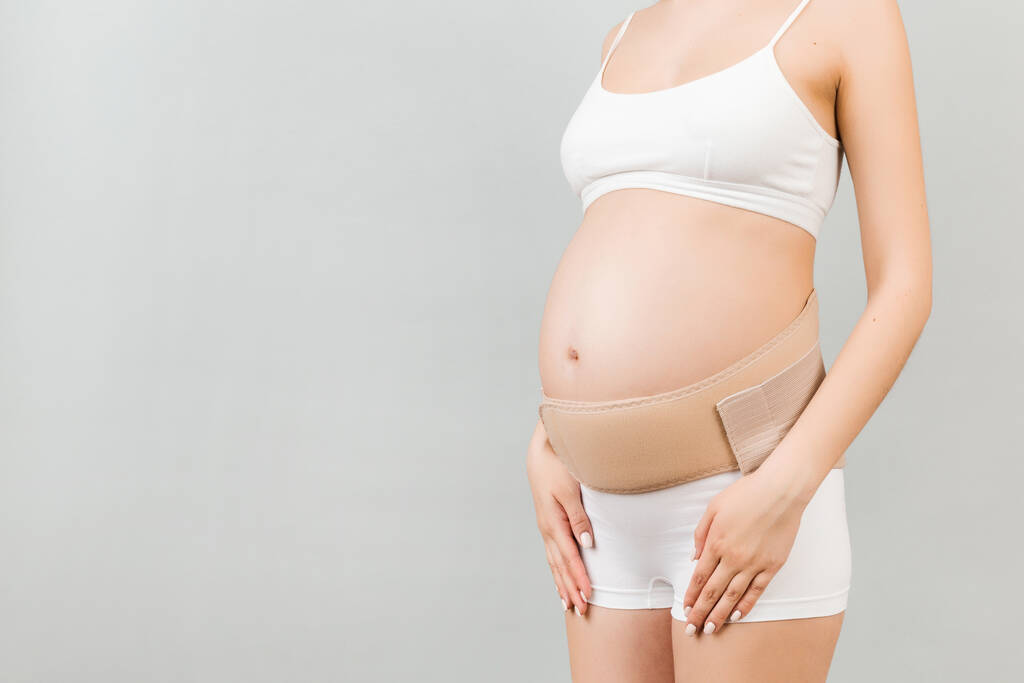Discover how using posture-correcting tools and supports during pregnancy can alleviate discomfort, improve posture, and promote overall well-being for expectant mothers.
Using Posture-Correcting Tools and Supports During Pregnancy
Pregnancy is an amazing journey, but it can take a toll on your posture. That’s why it’s important to understand the importance of good posture during this special time. Poor posture can lead to discomfort, back pain, and even complications. But don’t worry, there are plenty of posture-correcting tools and supports available to help you maintain proper posture and support your growing belly.

Understanding the Importance of Good Posture During Pregnancy
During pregnancy, your body is constantly changing to accommodate your growing baby. This can put strain on your back and pelvis, leading to poor posture. But why is good posture so important?
Firstly, maintaining good posture helps to distribute the weight of your baby evenly throughout your body, reducing strain on your back and pelvis. It also helps to align your spine, promoting better circulation and digestion. Plus, good posture can improve your breathing, providing more oxygen to both you and your baby.
So, as you can see, good posture is not just about looking poised and elegant – it’s about supporting your body and promoting optimal health during this exciting time.
The Impact of Pregnancy on Posture
Pregnancy affects your posture in several ways. As your baby grows, your center of gravity shifts forward, putting strain on your back. Your abdominal muscles stretch to accommodate your expanding belly, weakening their ability to support your spine. Hormonal changes also loosen your ligaments, making your joints less stable and increasing the risk of injury.
All these changes can contribute to poor posture, which can lead to discomfort and pain. That’s why it’s important to be proactive and use posture-correcting tools and supports to help maintain proper alignment.
One common issue that arises due to poor posture during pregnancy is lower back pain. The added weight of the baby pulls the spine forward, causing an increased curvature in the lower back. This can lead to muscle imbalances and strain on the surrounding muscles. By maintaining good posture, you can help alleviate this pain and prevent further complications.
Another impact of pregnancy on posture is the rounding of the shoulders. As the baby grows, the weight in the front of the body increases, causing the shoulders to roll forward. This can lead to tension in the neck and upper back, as well as contribute to poor breathing patterns. By consciously maintaining good posture, you can help counteract this rounding and keep your upper body aligned and balanced.
Health Benefits of Maintaining Good Posture
Maintaining good posture during pregnancy offers numerous health benefits. Firstly, it can help to alleviate common pregnancy discomforts such as back pain, sciatica, and pelvic pain. Good posture also aids in digestion and can reduce the risk of common pregnancy-related issues like heartburn and constipation.
Additionally, proper posture can improve your energy levels, allowing you to stay active and enjoy your pregnancy to the fullest. It can also promote better sleep by reducing muscle tension and aligning your spine. And let’s not forget the confidence boost that comes with standing tall and proud – you’re growing a miracle inside you, after all!
Furthermore, maintaining good posture throughout your pregnancy can have long-term benefits. By developing good postural habits now, you are setting yourself up for a healthier future. Good posture can help prevent the development of chronic back pain, improve overall body mechanics, and reduce the risk of postpartum complications.
Remember, good posture is not something that happens automatically – it requires conscious effort and practice. Incorporating exercises that strengthen your core and back muscles can greatly contribute to maintaining good posture during pregnancy. Additionally, using supportive pillows and cushions can help you find comfortable positions that promote proper alignment.
By prioritizing good posture during your pregnancy, you are investing in your own well-being and that of your baby. So stand tall, mama-to-be, and embrace the benefits of maintaining good posture!
Different Types of Posture-Correcting Tools
Now that you understand the importance of good posture during pregnancy, let’s explore the different types of posture-correcting tools and supports available to you.
Pregnancy is a beautiful and transformative time in a woman’s life, but it can also come with its fair share of physical discomforts. One common issue that many pregnant women face is poor posture, which can lead to back pain, muscle strain, and overall discomfort. Fortunately, there are various tools and supports specifically designed to help pregnant women maintain proper posture and alleviate these discomforts.
Pregnancy Support Belts
Pregnancy support belts are a popular choice among expectant mothers. These belts are designed to provide targeted support to your back and belly, reducing strain on your muscles and ligaments. They come in various styles, from simple belly bands to full-on maternity belts that wrap around your waist. These belts are easily adjustable and can be worn discreetly under your clothing.
When using a pregnancy support belt, it’s important to position it properly. It should sit low on your hips, providing gentle compression without digging into your skin. Experiment with different adjustments until you find the most comfortable position that effectively supports your growing belly.
Ergonomic Seating Solutions
Many pregnant women experience discomfort when sitting for prolonged periods. This is because the added weight and changes in body shape can put extra pressure on the spine and lower back. Ergonomic seating solutions, such as exercise balls and kneeling chairs, can help alleviate this discomfort and promote better posture.
An exercise ball is a versatile and effective seating option for pregnant women. It promotes proper alignment of your spine and provides extra support for your back. When using an exercise ball, make sure it’s the right size for your height. Sit with your feet flat on the ground and maintain a slight bounce to engage your core muscles, which can help strengthen your back and improve posture.
Kneeling chairs, on the other hand, encourage an open posture and take the pressure off your lower back. By distributing your body weight between your knees and shins, these chairs can help relieve back pain and promote better spinal alignment. Experiment with different seating options to find the one that works best for you and provides the most relief.
Maternity Pillows
A good night’s sleep is essential for any pregnant woman, but finding a comfortable sleeping position can be a challenge. This is where maternity pillows come to the rescue. These specially designed pillows provide support for your belly, hips, and back, helping you maintain proper alignment while you rest.
Maternity pillows come in various shapes, such as C-shaped and U-shaped pillows, to accommodate different sleeping positions. Some women find relief by placing the pillow under their belly, while others prefer tucking it between their legs. The goal is to find a position that allows you to relax and sleep soundly without putting strain on your body.
Remember, every woman’s body is unique, and what works for one person may not work for another. It’s important to listen to your body and experiment with different tools and supports to find the ones that provide the most comfort and relief for you. By prioritizing good posture during pregnancy, you can minimize discomfort and enjoy this special time in your life to the fullest.
How to Use Posture-Correcting Tools Effectively
Now that you have an idea of the different posture-correcting tools available, let’s talk about how to use them effectively.
Correct Placement of Support Belts
When using a pregnancy support belt, proper placement is crucial for maximum effectiveness. Firstly, make sure to start wearing the belt early in your pregnancy, before your belly becomes too heavy. Position it low on your hips, just above your pubic bone, and secure it snugly but not too tight.
Remember, the goal is to provide support, not to restrict your movement. If you experience any discomfort or pain while wearing the belt, adjust the snugness or consult with your healthcare provider.
Maximizing Comfort with Ergonomic Seating
When using ergonomic seating solutions, it’s important to understand that they’re not a one-size-fits-all solution. Experiment with different options to find the one that works best for you.
If you’re using an exercise ball, make sure it’s inflated to the right level to provide adequate support. Sit with your feet flat on the ground, maintaining good posture and engaging your core muscles. Don’t forget to take breaks and move around frequently to avoid prolonged sitting.
When using a kneeling chair, position your knees and shins comfortably on the padding. Make sure your back is straight and avoid slouching. If you need additional back support, consider using a lumbar cushion.
Proper Use of Maternity Pillows
Using a maternity pillow can be a game-changer when it comes to getting a good night’s sleep. Experiment with different positions and pillow shapes to find the one that provides optimal support and comfort.
Some women find relief by placing the pillow under their belly, while others prefer tucking it between their legs to align their hips. Don’t hesitate to try different arrangements until you find the perfect setup. And remember, it’s all about finding what works for you and allows you to rest peacefully.
Safety Considerations When Using Posture Supports
While posture-supporting tools can be beneficial during pregnancy, there are a few safety considerations to keep in mind.
When to Avoid Certain Posture Tools
Not all posture tools are suitable for everyone or every stage of pregnancy. Before using any support belt, ergonomic seating solution, or maternity pillow, consult with your healthcare provider. They can advise you on which tools are safe for your specific needs and how to use them correctly.
If you experience any discomfort or pain while using a posture tool, discontinue use and consult with your healthcare provider. They may be able to recommend alternative options or adjustments to ensure your safety and well-being.
Recognizing Signs of Discomfort or Complications
While posture-correcting tools can provide relief and support, it’s important to stay vigilant and listen to your body. If you experience any new or worsening discomfort, pain, or unusual symptoms, seek medical advice. These could be signs of a complication or that the specific tool you’re using is not suitable for you.
Remember, every pregnancy is unique, and what works for one woman may not work for another. Trust your instincts and prioritize your comfort and well-being at all times.
Consultation with Health Professionals
When it comes to your health and well-being during pregnancy, it’s always a good idea to consult with healthcare professionals.

Role of Physiotherapists in Posture Correction
Physiotherapists are experts in assessing and improving musculoskeletal health. They can help you identify and address any postural issues you may be experiencing during pregnancy. A physiotherapist can provide personalized exercises and stretches to strengthen your muscles and improve your posture.
Don’t hesitate to reach out to a physiotherapist specializing in pregnancy to get the professional guidance you need. They can work with you to create a tailored plan that meets your specific needs and goals.
Seeking Advice from Obstetricians
Obstetricians are specialized doctors who oversee the care of pregnant women. During your regular check-ups, don’t hesitate to discuss any concerns or questions you may have about your posture and the use of posture-correcting tools.
Your obstetrician can provide valuable advice and guidance based on your unique medical history and specific circumstances. They can help ensure that any posture tools you use are safe and appropriate for you and your baby.
Remember, using posture-correcting tools and supports during pregnancy is all about promoting your comfort, well-being, and the health of your baby. Take the time to explore the different options available, consult with healthcare professionals, and listen to your body. With the right tools and support, you can enjoy a more comfortable and healthy pregnancy journey. Stand tall, mamas-to-be – you’re doing amazing!



